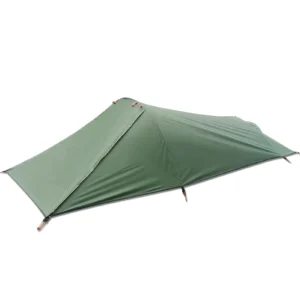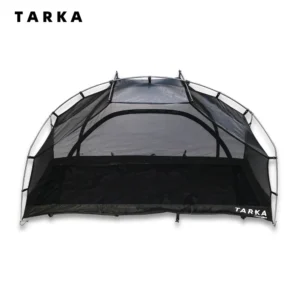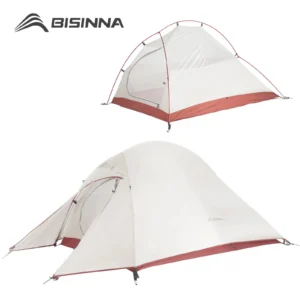When searching for the perfect backpacking tent, weight becomes one of the most crucial factors to consider. But what exactly transforms an ordinary tent into an ultralight marvel? Let’s explore the fascinating world of ultralight tents and discover how they achieve their feather-light status without sacrificing essential protection.
Understanding Ultralight Tent Classification
The term “ultralight” isn’t just clever marketing—it represents a specific weight category in the outdoor gear world. Generally speaking, ultralight tents weigh under 2-3 pounds (0.9-1.4 kg) for 1-2 person shelters. This classification stands in contrast to lightweight tents (3-4 pounds) and traditional tents (5+ pounds).
When evaluating tent weight, understanding these key concepts is essential:
- Weight per person: True ultralight tents typically weigh less than 1.5 pounds per person
- Packaged Weight: The total weight including tent body, rainfly, poles, stakes, stuff sacks, and accessories
- Minimum/Trail Weight: The weight of just the essential components needed for setup (typically tent body, rainfly, and poles)
The ultralight philosophy extends beyond simply carrying less weight. It represents a holistic approach to backpacking that prioritizes efficiency, simplicity, and intentionality. Understanding various shelter options for two campers can help you make informed choices about which design best suits your needs.
Ultralight enthusiasts often focus on the “Big Three” gear items—shelter, backpack, and sleep system—as these typically constitute the heaviest components in a backpacker’s kit. By drastically reducing tent weight, hikers can potentially decrease their overall load by several pounds, creating cascading benefits throughout their gear system. The 20 percent rule for backpacking provides valuable context for understanding why shelter weight matters so much in the larger gear ecosystem.
This ultralight movement didn’t appear overnight. It evolved gradually from traditional camping equipment, with each generation of gear becoming progressively lighter through material innovation and design ingenuity.
Advanced Materials: The Foundation of Weight Savings
Revolutionary Fabric Technologies
The most significant weight reductions in modern ultralight tents come from revolutionary fabrics that offer strength at a fraction of the weight of traditional materials.
Dyneema® Composite Fabric (DCF) (formerly known as Cuben Fiber) represents the pinnacle of ultralight tent materials:
- Strengths: Incredibly lightweight (often half the weight of silnylon), 100% waterproof without requiring coatings, zero stretch when wet, exceptional tear strength
- Limitations: Extremely expensive (often doubling the tent cost), limited repairability in the field, less abrasion resistant than nylon, and creates a somewhat crinkly noise
Silnylon (silicone-impregnated nylon) remains the most common ultralight tent fabric:
- Strengths: Excellent strength-to-weight ratio, good waterproofing, reasonable cost, and good tear resistance
- Limitations: Stretches when wet (requiring re-tensioning), eventually requires waterproofing renewal, less dimensionally stable
Silpoly (silicone-impregnated polyester) has gained popularity as an alternative:
- Strengths: Minimal stretch when wet, excellent UV resistance, maintains tension throughout changing conditions
- Limitations: Slightly heavier than comparable silnylon, lower tear strength in some formulations
Fabric denier (D) represents thread thickness and directly impacts weight and durability. Ultralight tents might use 7-15D fabrics for canopy and fly, while mainstream tents often use 40-70D materials. Lower denier means less weight but decreased durability, requiring more careful handling. Understanding the most durable tent material options can help you balance weight savings with longevity concerns.
The weight differences are substantial: A square yard of 70D nylon might weigh around 2.5 ounces, while 10D material could weigh less than 0.7 ounces—a 72% reduction.
Structural Components and Hardware
Beyond fabrics, ultralight tents achieve significant weight savings through advanced structural components:
Pole Materials:
* Carbon fiber poles reduce weight by 30-40% compared to aluminum but come with higher cost and fragility concerns
* DAC Featherlite aluminum strikes a balance between weight reduction and durability
* Trekking pole integration eliminates dedicated tent poles entirely, saving 8-12 ounces in many designs
Minimalist Hardware:
* Titanium or aluminum stakes can weigh less than 0.2 ounces each (compared to 0.5+ for standard stakes)
* Ultralight zippers save 1-2 ounces over traditional versions
* Thinner guylines (1.5mm vs 3mm) reduce weight while maintaining sufficient strength
* Replacing plastic hardware with cord loops and lightweight tensioners
The compatibility of various tent poles becomes particularly important when considering ultralight options, especially for those looking to repair or modify their shelters for even greater weight savings.
Design Innovations for Minimal Weight
Single vs. Double-Wall Construction
One of the most impactful design decisions affecting tent weight is wall construction:
Single-wall construction combines the tent body and rainfly into one integrated piece:
* Eliminates duplicate material layers
* Reduces weight by 30-40% compared to equivalent double-wall designs
* Simplifies setup with fewer components
* Creates potential condensation challenges requiring strategic ventilation
Double-wall construction separates the mesh inner tent from the waterproof rainfly:
* Manages condensation more effectively through the air gap between layers
* Offers versatility (can use just the inner tent in dry conditions)
* Adds weight through duplicate materials and additional zippers/connections
Hybrid designs attempt to blend advantages by integrating partial rainfly sections with mesh areas for ventilation while minimizing weight.
For ultralight backpackers, understanding the nuances between single-wall vs double-wall ultralight tents helps determine which approach best suits their climate conditions and comfort preferences.
Structural Design Approaches
The architectural approach to tent structure significantly impacts weight:
Non-freestanding tents rely entirely on stakes and tension for structure:
* Eliminate weight of additional poles needed for self-support
* Typically save 8-16 ounces compared to freestanding equivalents
* Require suitable ground for staking and more setup knowledge
* May limit campsite options where staking is difficult (rock, platforms)
Semi-freestanding tents can stand with minimal staking:
* Offer more flexible site selection than fully non-freestanding designs
* Add slightly more weight than non-freestanding options
* Provide easier setup, especially for beginners
Freestanding ultralight tents maintain self-support without stakes:
* Offer maximum campsite flexibility
* Simplify setup on challenging surfaces
* Add 4-12 ounces compared to non-freestanding equivalents of similar size
Modern materials have enabled ultralight freestanding tent designs that were previously impossible, bringing their weights closer to non-freestanding options while maintaining the convenience many campers prefer.

Space-to-Weight Optimization
Innovative geometric designs maximize usable space while minimizing material:
- Asymmetric designs concentrate material where needed (sleeping area) and reduce it elsewhere
- Catenary cuts create tension in fabric with less material, reducing weight by 10-15%
- Tapered footprints match human body shape (wider at shoulders, narrower at feet)
- Minimalist features like single doors (saving 2-4 ounces) and reduced vestibules
- Strategic interior storage using minimal, carefully placed mesh pockets
- Floorless designs that save 4-8 ounces by eliminating the ground cloth entirely
The art of maximizing space and comfort in ultralight shelters involves clever design that provides adequate livability without unnecessary weight, ensuring you have room for both occupants and essential gear.
The Ultralight Equation: Benefits vs. Tradeoffs
Advantages of Going Ultralight
The benefits of ultralight tents extend far beyond simply carrying less weight:
- Reduced physical strain:
- Less fatigue during long hiking days
- Decreased joint impact, particularly knees and hips
- Ability to cover more distance with the same effort
Lower energy expenditure (research suggests each pound saved saves approximately 4-6 calories per mile)
Increased enjoyment:
- More energy for experiencing surroundings rather than managing heavy loads
- Mental freedom from simplified gear systems
- Faster setup and breakdown with simpler designs
Ability to use smaller, lighter backpacks as a cascading benefit
Enhanced mobility:
- Easier river crossings and challenging terrain navigation
- Less impact on balance with lighter loads
- More agile movement across varied landscapes
Understanding how much a backpacking tent should weigh helps put these benefits into proper context for your specific adventure style and physical capabilities.
Understanding the Compromises
While ultralight tents offer compelling advantages, they come with important considerations:
- Durability concerns:
- Reduced puncture and abrasion resistance from thinner materials
- Shorter lifespan expectancy compared to traditional tents
- Greater need for careful site selection and handling
Increased importance of field repair knowledge
Cost implications:
- Premium pricing ($300-700 for quality ultralight tents vs $150-300 for traditional)
- Higher cost-per-use if durability is compromised
More expensive replacement parts
Comfort considerations:
- Typically smaller interior dimensions (often 5-15% less floor space)
- Lower peak heights (often 3-6” less headroom)
- Potentially increased condensation management needs
- Reduced weather protection in extreme conditions
Ultralight gear requires accepting a different approach to outdoor adventure—one that values efficiency and movement over basecamp comfort and bombproof durability.
Types of Ultralight Shelters: Finding Your Match
Different shelter designs approach the ultralight challenge in unique ways:
Modern single-wall tents (1.5-2.5 lbs):
* Integrated fly and body in one piece
* Typically semi-freestanding or freestanding
* Best for: general backpacking, versatile conditions
* Examples: Many lightweight 1-2 person commercial tents
Ultralight double-wall tents (2-3 lbs):
* Separated mesh inner and waterproof fly
* Use ultralight materials to minimize weight penalty
* Best for: humid environments, moderate conditions
* Feature minimalist poles and hardware while maintaining familiar structure
Trekking pole tents and pyramids (1-2 lbs):
* Use hiking poles for support instead of dedicated tent poles
* Typically non-freestanding designs requiring proper staking
* Best for: weight-conscious hikers who already carry trekking poles
* Offer excellent strength-to-weight ratio in harsh conditions
Ultralight trekking pole tents represent some of the lightest fully-enclosed shelter options available, often weighing half as much as traditional freestanding tents of similar size.
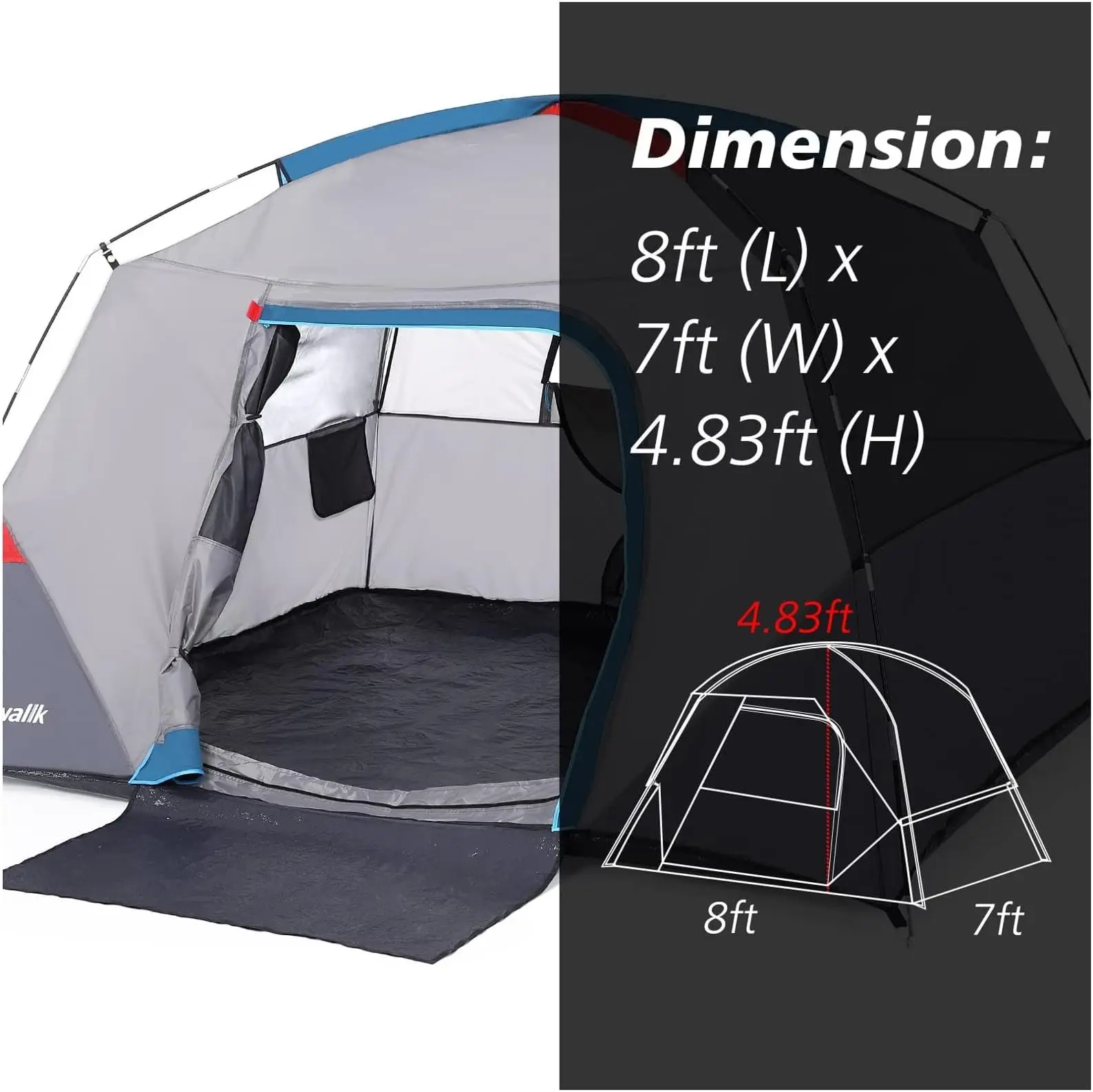
Tarp systems (8-16 oz):
* Minimalist overhead protection without enclosed sides
* Require skilled setup and site selection
* Best for: experienced backpackers, good weather conditions
* Highly customizable pitching options for different environments
Bivy sacks (7-16 oz):
* Minimalist personal shelters resembling waterproof sleeping bag covers
* Extremely compact packed size
* Best for: ultralight solo travelers, alpine conditions
* Limited living space but maximum weather protection-to-weight ratio
Ultralight bivy tents provide the absolute minimum in shelter while still offering protection from elements, making them ideal for solo travelers covering maximum distance with minimal weight.
Hammock shelter systems (1.5-2.5 lbs complete):
* Suspended sleeping systems with integrated bug protection and rainflies
* Eliminate need for flat ground
* Best for: forested environments with suitable trees
* Require additional components (straps, underquilts) for complete shelter
Finding Your Perfect Ultralight Shelter: Decision Factors
Lightweight Backpacking Tent, Ultralight Backpacking Tent, Ultralight Bivy Tent
Ultralight Single Person Camping Tent with Aluminum Poles for 3-Season Backpacking Waterproof DesignPrice range: $94.88 through $326.82 Select options This product has multiple variants. The options may be chosen on the product pageLightweight Backpacking Tent, Ultralight Backpacking Tent, Waterproof Backpacking Tent
$391.05 Select options This product has multiple variants. The options may be chosen on the product pageUltralight Backpacking Tent, Ultralight Dome Tent, Winter Camping Tent
Price range: $369.63 through $370.07 Select options This product has multiple variants. The options may be chosen on the product pageHeavy Duty 4 Season Tent, Ultralight Freestanding Tent, Winter Camping Tent
$3,722.66 Select options This product has multiple variants. The options may be chosen on the product pageUltralight Backpacking Tent, Ultralight Trekking Pole Tent
Price range: $350.87 through $351.98 Select options This product has multiple variants. The options may be chosen on the product pageLightweight Backpacking Tent, Trekking Pole Backpacking Tent, Ultralight Backpacking Tent
$459.47 Select options This product has multiple variants. The options may be chosen on the product page
Selecting the right ultralight tent requires matching shelter characteristics to your specific needs:
User-Specific Considerations:
* Solo vs. partner hiking (needed capacity)
* Trip duration (tolerance for compromise increases on shorter trips)
* Experience level (non-freestanding tents require more setup skill)
* Sleeping style (side sleepers may need wider floor dimensions)
Environmental Factors:
* Expected weather conditions (more extreme conditions may warrant stronger designs)
* Terrain types (rocky areas may require freestanding designs)
* Campsite availability (established sites vs. backcountry)
* Insect pressure (determining need for full mesh protection)
Personal Preferences:
* Desired interior space (comfort threshold)
* Setup convenience importance
* Condensation tolerance
* Need for privacy
Picking the perfect ultralight backpacking tent involves balancing these factors against weight goals. Sometimes the lightest option isn’t the best choice if it doesn’t match your specific conditions or comfort requirements.
The Explore Elements collection of ultralight backpacking tents offers options that balance minimal weight with practical functionality across various designs and price points.
Ultralight Tent Maintenance: Protecting Your Investment
Proper care extends the life of delicate ultralight materials:
Special Care Considerations:
* Clean with gentle soap only (no detergents or washing machines)
* Always ensure complete drying before storage
* Handle thin fabrics with extra care near abrasive surfaces
* Use appropriate stakes for ground conditions to prevent tension damage
Field Repair Essentials:
* Carry repair tape specifically designed for your tent’s fabric type
* Know emergency repair techniques using basic supplies
* Pack a small repair kit with needle, thread, and patches
* Perform temporary fixes immediately to prevent expanding damage
Long-Term Preservation:
* Store loosely in dry, cool location (never compressed for long periods)
* Periodically reapply DWR (Durable Water Repellent) treatments
* Maintain seam sealing annually or as needed
* Minimize prolonged UV exposure when not in use
With proper care, even ultralight tents can last for thousands of trail miles despite their thinner materials.
Is an Ultralight Tent Right for You?
Determining if an ultralight tent suits your needs requires honest self-assessment:
Ask yourself these questions:
* Will I primarily use this tent for backpacking or car camping?
* How important is saving weight compared to durability and space?
* Am I willing to be more careful with my gear to preserve ultralight materials?
* What weather conditions will I typically encounter?
* Does my budget allow for premium ultralight materials?
Ultralight tents work best for:
* Thru-hikers covering substantial daily distances
* Backpackers seeking to reduce physical strain
* Those with established minimum comfort thresholds
* Hikers willing to develop specialized setup skills
* Adventures where weight savings create meaningful benefits
Traditional tents might be better for:
* Car camping or short-distance backpacking
* Base camp situations with extended stay in one location
* Extremely harsh weather expeditions
* Those prioritizing durability over weight
* Beginners still developing their gear preferences
Understanding what constitutes a good weight for an ultralight tent helps establish realistic expectations based on your specific needs and usage scenarios.
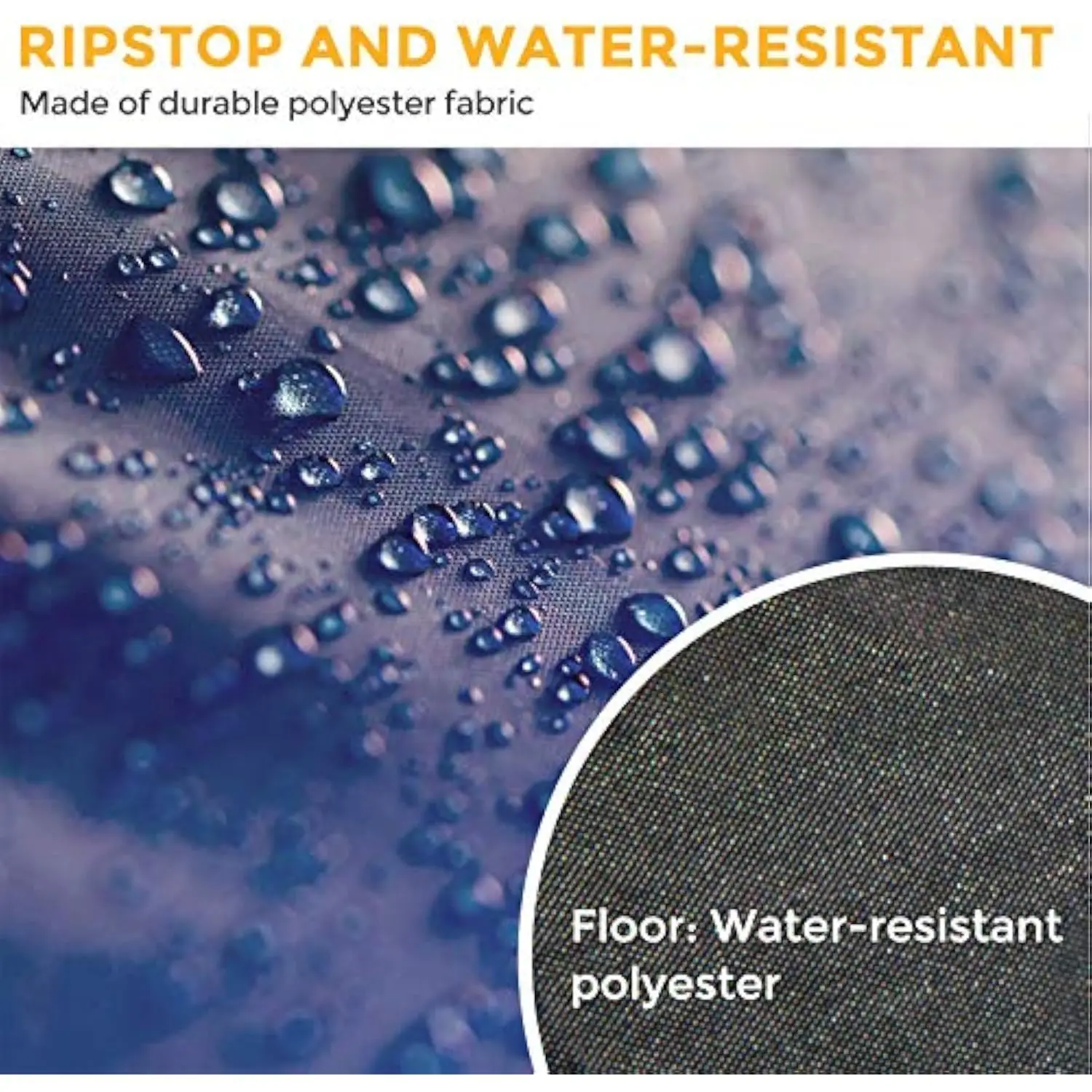
When Ultralight Goes Too Far: Common Pitfalls
In the pursuit of minimum weight, some backpackers cross the line between lightweight and “stupid light” (sacrificing essential function for minimal weight savings):
Balancing Perspective:
* Saving half an ounce isn’t worth compromising weather protection
* Appropriate ultralight choices depend on specific trip conditions
* Experience level should guide how minimal you go
Common Ultralight Mistakes:
* Choosing inadequate weather protection for expected conditions
* Insufficient space for gear storage in wet environments
* Expecting ultralight gear to handle abuse like traditional equipment
* Selecting non-freestanding designs without proper setup knowledge
Skills Matter:
* Site selection becomes critical with minimalist shelters
* Practice setup before backcountry trips
* Understand when to choose campsite based on shelter limitations
Mastering two-person lightweight tent setup techniques before heading into the wilderness ensures you can properly deploy your shelter regardless of conditions or fatigue level.
The most successful ultralight backpackers aren’t those with the lightest gear but those who understand the balance between weight savings and practical functionality—choosing appropriate equipment for specific conditions rather than pursuing arbitrary weight goals.


